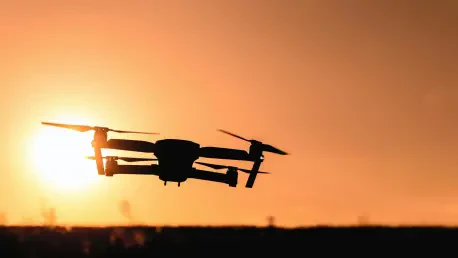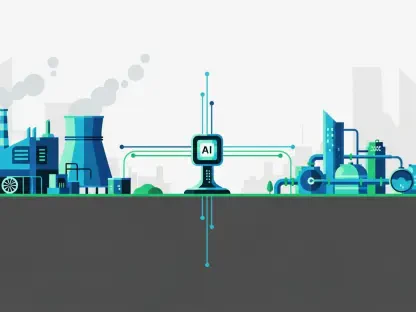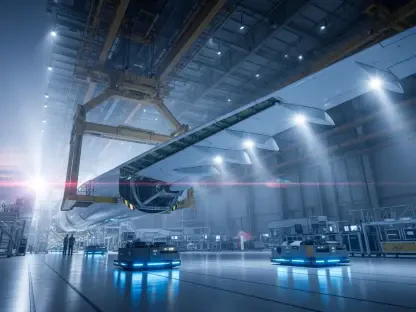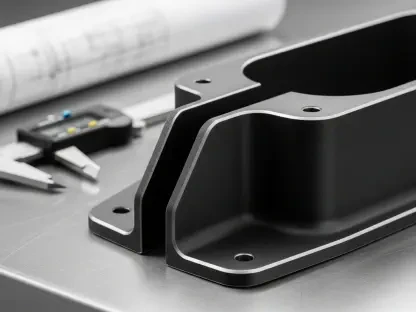The pioneering work of engineer Tsung Xu in 3D printing technology and drone creation illuminates the dynamic possibilities in aerospace engineering. By constructing a vertical takeoff and landing (VTOL) drone with winged capabilities, Xu pushes the boundaries of what can be achieved with consumer-grade systems. His project, which remarkably covers 130 miles in about 3 hours, signifies a notable advancement in drone endurance and design. Utilizing 3D printing for prototyping, this venture highlights how individual projects can contribute to broad innovative trends, bridging the gap between hobbyist effort and sophisticated engineering. Xu’s groundbreaking drone project, entirely developed without any pre-made airframe or commercial blueprint, showcases the potential unlocked by consumer-accessible technology and emphasizes a significant step toward decentralized aerospace innovation.
Harnessing 3D Printing for Drone Construction
From Concept to Flight
Tsung Xu’s drone development serves as a testament to the power of 3D printing in transforming ordinary hobbyist capabilities into extraordinary engineering feats. Over a span of 90 days, Xu meticulously designed, modeled, and printed every component of the drone, despite lacking formal training in aerodynamic modeling, 3D printing, or computer-aided design. This illustrates the democratization of technology, where individuals can now undertake complex engineering projects independently. The VTOL drone’s versatility in flying over significant distances in a few hours epitomizes the advancements possible through precision manufacturing. The ability to design and iterate rapidly is one of 3D printing’s strongest suits, offering Xu the flexibility to refine aerodynamic features without lengthy delays, a vital advantage that fosters innovation in aerospace prototyping.
The Role of Bambu Lab A1 Printer
Key to this innovation was the use of the Bambu Lab A1 3D printer, which made it possible to fabricate intricate composite parts of the drone’s airframe and flight surfaces. Xu’s work underscores the critical role 3D printers play in enabling rapid iterations to optimize performance. By not relying solely on pre-made models, this approach highlights the flexibility of 3D printing in developing complex aerodynamics for advanced flight maneuvers. Coupled with consumer-sourced motors and electronic speed controllers, the project exemplifies how effective system integration can elevate the efficacy of drones. The high-energy lithium battery further enhanced the drone’s endurance beyond standard FPV systems, demonstrating the substantial power and efficiency gains accessible through careful design and component selection.
The Impact of Consumer-Accessible Technologies
Bridging Amateur Experimentation and Aerospace Development
Tsung Xu’s quest to build a formidable drone illustrates the expansive reach of consumer-accessible technologies in bridging amateur projects with formal aerospace innovation. His achievement is a vivid reflection of how individual efforts, driven by passion and creativity, are increasingly contributing to fields that traditionally rely on significant research and development investment. Although Xu opted not to release a technical breakdown or open-source plans, his work symbolizes a broader trend where the lines between professional and amateur innovation grow increasingly blurred. The industry is witnessing a shift where decentralized experimentation complements major institutional efforts, bringing fresh insights and novel solutions to the forefront of technological advancement.
Regulatory and Military Interest
Xu’s venture resonates within the context of burgeoning interest in 3D printing and drone technologies from regulatory bodies and the military. Notably, the U.S. Army’s current exploration of additive manufacturing indicates an institutional recognition of the benefits posed by such innovations in logistics and reconnaissance. This coincides with Xu’s project, which demonstrates low-cost yet robust approaches to aerospace design. The phenomenon exemplifies a shift toward decentralized innovation that emphasizes efficiency and cost-effectiveness, qualities highly valued in military and regulatory circles. Tsung Xu’s VTOL drone marks an important addition to this evolving landscape, showcasing potential pathways for future endeavors that leverage the confluence of accessible technology and creativity.
Toward a Decentralized Innovation Landscape
The Enduring Legacy of Innovation
The strides made by Tsung Xu, through the development of his VTOL drone using 3D printing, highlight the transformative potential of merging creativity with advanced technology. Xu’s achievement points toward an ever-evolving landscape in aerospace innovation where traditional models of development are replaced by decentralized and democratic approaches. This paradigm encourages individual ingenuity and the capacity for broader hobbyist contributions, paving a path for more inclusive technological advancements. By using consumer-grade components and the capabilities of 3D printing, Xu’s project reaffirms the idea that innovation lies not only within well-funded labs but also across garages worldwide.
Looking Ahead
Tsung Xu’s endeavor to engineer a powerful drone highlights the expansive potential of technology that is accessible to consumers, effectively merging amateur projects with formal aerospace advancements. His accomplishment demonstrates the impact of individual endeavors, fueled by passion and creativity, in contributing to fields historically dependent on substantial research and development budgets. Despite choosing not to divulge a technical analysis or share open-source designs, Xu’s work epitomizes a broader trend of blurring the distinctions between professional and amateur innovation. The industry is undergoing a transformation where decentralized experimentation complements substantial institutional efforts, yielding fresh insights and groundbreaking solutions. This evolution underscores the democratization of innovation, where enthusiastic individuals can significantly influence fields that were once exclusively navigated by professional entities, thereby enriching the landscape of technological progress with novel ideas and methods.









